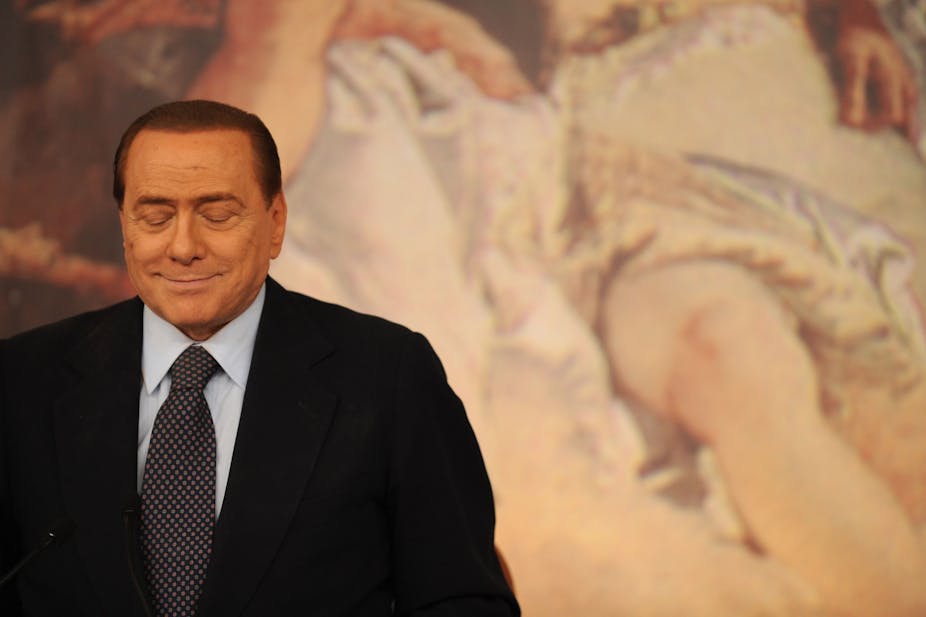Italian Prime Minister Silvio Berlusconi’s reassurance to his parliamentary colleagues during a speech on Wednesday did little allay about fears of a crisis in Eurozone’s third-biggest economy.
The Italian stock market in Milan ended that day down 2% and the media commentary was less than gratifying.
But Berlusconi defended Italy’s economic record against such negative assessments, pointing out that the country’s banks had passed stress tests, and claimed that the crisis was born from international, rather than domestic, economic instability.
Milan’s authoritative newspaper, Corriere della Sera, referred to Italy’s situation as “a fire that needs to be put out” even if we all feel that the markets are treating Italy unfairly.
Despite Berlusconi’s claims, it is clear that sovereign debt crisis affecting Portugal, Ireland, Greece and Spain has made its way to Italy.
A taste for debt
Italy has run significant deficits for many years. Even at the time of Maastricht Treaty in 1992, in which the criteria for entry into the Eurozone was set, the Italian government’s debt hovered around 108% to 120% of GDP.
While Italy, along with Belgium and Greece, failed to meet the sanctioned 60% government debt-to-GDP ratio required for Eurozone membership, it was admitted into the union for “political reasons” advanced by Franco-German leaders at the time. Belgium was admitted at the same time and Greece was subsequently admitted in 2001.
Italy’s debt was tolerated by EU leaders for the sake of creating a more widely-encompassing union.
The contagion effect of the debt crises should not be underestimated, and the argument that Italy is a “a country too big to fail” convinces very few people.
Berlusconi’s fragmented and ineffective coalition government has on two occasions over the last six months tried to placate bond markets with pledges of austerity and government budget. These efforts have turned out to be ineffectual.
While German Finance Minister Wolfgang Schauble cautioned about putting Spain and Italy in the same boat as Greece, this did little to reassure the bond market and the interest spread, which has grown significantly over the last 12 months.
Moreover, the EU’s attempts to provide protection through the European Financial Stability Facility – which was established alongside Greece’s second bailout last month – has not been sufficient to overcome the spread and the jitters on the bond and stock markets.
Over the last 12 months there have been a series of desperate attempts to find answers to the financial uncertainty that some argue would have been resolved if the Greece bailout had been tougher.
There were solutions such as tiered monetary system based on a “Euro 1” and a “Euro 2”. There also have been proposals to allow certain European Union nations to opt out temporarily and recently in the Italian press there was even the idea of allowing the Euro to devalue against the US dollar. However, there is a view that the division of the Eurozone would only compound instability.
Delayed austerity
Under the guidance of the Finance Minister Giulio Tremonti, the Italian government last month presented a number of austerity measures. These seemed to decrease the government’s popularity and did little to inspire hope among the markets.
The austerity budget of 80 billion euros seemed unconvincing for a series of reasons. Firstly, only about 19% of the austerity measures will be implemented under the current Berlusconi government. The rest is destined for future governments, after the 2013 election.
Ultimately, the measures are cast too far into the future – especially the pension reforms – and are not seen as particularly credible. Moreover, the reforms involved introduction of medical taxes called “tickets”, which are being boycotted by some of the regions and openly contested by the Northern League – a member Berlusconi’s centre-right coalition.
Naturally, the markets are concerned that the austerity measures are not even supported by the parties within the government.
Making the situation even more difficult has been the flaky nature of the Berlusconi government, which has not only suffered from lack of credibility and cohesion – its economic administration has been seen to be failing.
The political stability within the coalition has been tested by a series of mini electoral losses suffered by the centre-right government over the last few months. And without political certainty, there will be little economic certainty.
Berlusconi’s very public legal problems have also entered into the picture by further highlighting the political weakness of his hold on government.
Multi-speed EU economy
Once upon a time, all the “weaker” economies of the Eurozone were protected by a single monetary policy and a strong and stable Euro. This protection has been undermined by the spread of interest paid on the bond markets, which reflect the weaknesses of each member state – including differing ratings by the top three credit ratings agencies.
Italy’s bond repayments have almost reached the risk-indicating year return of 6.5%, which is very close to the levels reached by Greece, Portugal and Ireland.
The bitter truth is that to refinance Italy’s public debt the Italian authorities need to demonstrate to lenders that it can repay 4% more than what would be expected for German bonds. This is similar to what Greece faced 16 months ago.
Moreover, a failure by Berlusconi to bring forward the forecast of a balanced budget will do little to convince to the markets.
There has been talk of forming an “emergency technical government” or “government of solidarity”, which could include dusting off some old political hands to put things back in order.
This has included talk of a return for former Prime Minister Giuliano Amato – an experienced hand at austerity cuts from 1992-93, when his government implemented the largest austerity measures in modern Italian history.
Time will tell how far this crisis runs. But at this moment it would be hard to say that it’s business as usual in Berlusconi’s Italy.

